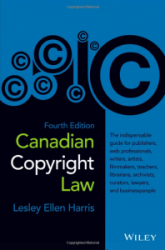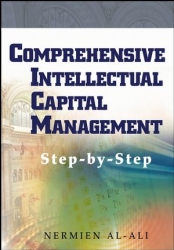
Author : Correa, Carlos M., Hilty, Reto M.
Publishing Date : Mar 20, 2023
This open access book is the outcome of a Global Forum on Innovation, Intellectual Property and Access to Medicines held in December 2019 at the Max Plank Instititute in Munich, organised by the South Centre and the Max Plank Institute. The academics and experts from international organisations participating have contributed chapters to this book. The book is for policy makers (in Ministries of Health, Ministries of Trade, Ministries of Foreign Affairs, patent offices), but also relevant for academics (law, trade, public health), on the flexibilities available in the Agreement on Trade Related Aspects of Intellectual Property Rights (TRIPS) of the World Trade Organization to promote access to medicines.

Author : Simon Stokes
Publishing Date : Sep 25, 2014
The intellectual property protection afforded to works of art is receiving increased attention by artists, museums, galleries, auction houses, publishers and their professional staff and legal advisors, as well as by those teaching or studying copyright and/or the law of cultural property.
Contemporary artists are pushing copyright law to extremes. The European Union is likely to soon formally adopt an artists’ resale right (droit de suite) directive. The recent adoption of the digital copyright directive will also further strengthen the rights of artists as regards the exploitation of their works via the Internet.
This is the first text to specifically examine in detail the intellectual property rights protecting artistic works and artists’ rights generally in the United Kingdom. The focus is on the UK but where appropriate other relevant jurisdictions are discussed. Recent European developments and the evolving UK case law in this area including the recent House of Lords’ decision in Designers Guild v Russell Williams are also addressed. The Internet and related intellectual property rights to copyright and moral rights are considered as well, including the law of passing off, breach of confidence, trade marks and domain name protection.
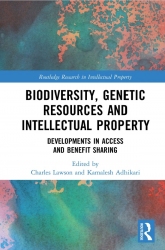
- Biodiversity, Genetic Resources and Intellectual Property Developments in Access and Benefit Sharing
Author : Kamalesh Adhikari, Charles Lawson
Publishing Date : May 04, 2020
Debates about Access and Benefit Sharing (ABS) have moved on in recent years. An initial focus on the legal obligations established by international agreements like the United Nations Convention on Biological Diversity and the form of obligations for collecting physical biological materials have now moved to a far more complex series of disputes and challenges about the ways ABS should be implemented and enforced: repatriation of resources, technology transfer, traditional knowledge and cultural expressions; open access to information and knowledge, naming conventions, farmers’ rights, new schemes for accessing pandemic viruses and sharing DNA sequences, and so on. Unfortunately, most of this debate is now crystallised into apparently intractable discussions such as implementing the certificates of origin, recognising traditional knowledge and traditional cultural expression as a form of intellectual property, and sovereignty for Indigenous peoples. Not everything in this new marketplace of ABS has been created de novo. Like most new entrants, ABS has disrupted existing legal and governance arrangements. This collection of chapters examines what is new, what has been changed, and what might be changed in response to the growing acceptance and prevalence of ABS of genetic resources.
Biodiversity, Genetic Resources and Intellectual Property: Developments in Access and Benefit Sharing of Genetic Resources addresses current issues arising from recent developments in the enduring and topical debates about managing genetic resources through the ABS regime. The book explores key historical, doctrinal, and theoretical issues in the field, at the same time developing new ideas and perspectives around ABS. It shows the latest state of knowledge and will be of interest to researchers, academics, policymakers, and students in the fields of intellectual property, governance, biodiversity and conservation, sustainable development, and agriculture.
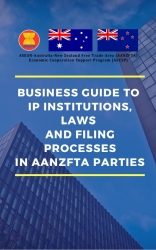
Author : ASEAN Secretariat
Publishing Date : Mar 12, 2020
This Guide is designed for business people of ASEAN Member States, Australia and New Zealand. In aid
of understanding, some examples have been provided, but these are mere illustrations and do not
provide judgment and do not constitute commercial or legal advice. Views or conclusions may have also
been expressed but these should NOT be taken as legal or commercial advice. Any part of the content of
this publication (including images, graphics, trademarks or logos) is only intended for informational and
educational purpose only.
The author and the ASEAN Secretariat have taken due diligence in the preparation of this publication.
However, they shall not be held liable for any omissions or inaccuracies in the content of this
publication. Neither the authors, the ASEAN Secretariat, Australian and New Zealand Governments
accept any liability for any claims, loss or expenses that may arise or arising from use of information in
this publication. Reliance on the information is at the user’s sole risk/responsibility.
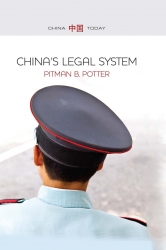
Author : -
Publishing Date : May 11, 2017
China’s legal system is vast and complex, and robust scholarship on the subject is difficult to obtain. Inside China’s Legal System provides readers with a comprehensive look at the system including how it works in practice, theoretical and historical underpinnings, and how it might evolve. The first section of the book explains the Communist Party’s utilitarian approach to law: rule by law. The second section discusses Confucian and Legalist views on morality, law and punishment, and the influence such traditional Chinese thinking has on contemporary Chinese law. The third section focuses on the roles of key players (including judges, prosecutors, lawyers, and legal academics) in the Chinese legal system. The fourth section offers Chinese legal case studies in civil, criminal, administrative, and international law. The book concludes with a comparison of China’s fundamental governing and legal principles with those of the United States, in such areas as checks and balances, separation of powers, and due process.
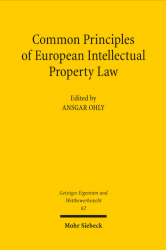
Author : Ohly, Ansgar
Publishing Date : May 15, 2023
Intellectual property law has been harmonized by EU law to a considerable extent. At the same time intellectual property rights have converged. The academic discussion has not kept pace with this development. European intellectual property law is often seen through the spectacles of national law; pan-European discussions about issues of Community law seem to be the exception rather than the rule. The contributors to this volume investigate if and to what extent European rules and principles applicable to all intellectual property rights already exist or whether they can be found on the basis of the acquis communautaire and comparative law. In particular, they discuss the merits and the methodology of common principles before turning to several areas of substantive intellectual property law such as grounds of protection, secondary liability and exceptions, to enforcement and finally to the relationship between intellectual property and neighbouring areas of EU law.
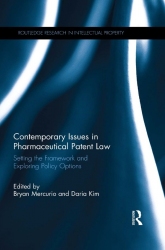
Author : Bryan Mercurio, Daria Kim
Publishing Date : Feb 17, 2017
This collection reflects on contemporary and contentious issues in international rulemaking in regards to pharmaceutical patent law. With chapters from both well-established and rising scholars, the collection contributes to the understanding of the regulatory framework governing pharmaceutical patents as an integrated discipline through the assessment of relevant laws, trends and policy options. Focusing on patent law and related pharmaceutical regulations, the collection addresses the pressing issues governments face in an attempt to resolve policy dilemmas involving competing interests, needs and objectives. The common theme running throughout the collection is the need for policy and law makers to think and act in a systemic manner and to be more reflective and responsive in finding new solutions within and outside the patent system to the long-standing problems as well as emerging challenges
123NextLast



